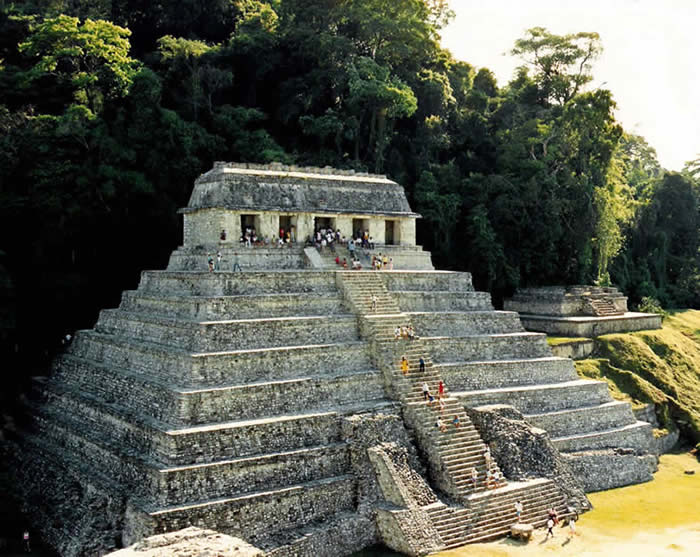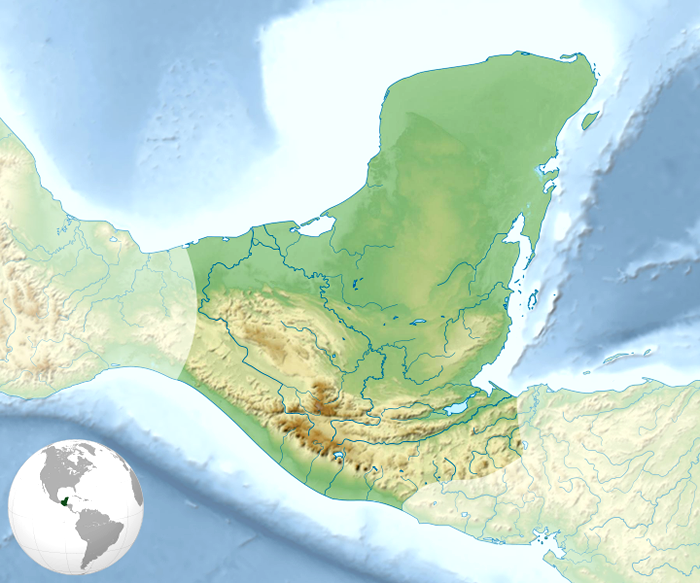 Mayan (Nephite) Empire
Mayan (Nephite) Empire

(Text by Duane R. Hurst © 2013)
Click on a link to view its information and pictures.
See Book of Mormon Map for Locations.
|
MAYAN LINKS: Significant Event: Battle at Cumorah (Alternate Site) Recorded History in Book of Mormon Visit of Resurrected Jesus Christ Main Cities: Kaminaljuyu (Nephi); Palenque (Bountiful); Teotihuacan Time: 600 BC - 423 AD Language: Mayan Personage: Alma; Lehi; Mormon; Nephi Religion: Ancestor Worship; Mayan Gods Related Country: Guatemala; Mexico Brief History: I have included only a few items concerning the history of this empire. A good source for more details can be found on Wikipedia or in history books. |
|
|
EARLY YEARS:
Current knowledge about this civilization is inaccurate and spotty speculation. The actual history of the "Mayans" can be found in the Book of Mormon. According to this record, Lehi led his family and other people from a home in ancient Jerusalem to settle in modern Guatemala. The family built a ship near Khor Karfot and crossed the Pacific Ocean. DIVISION INTO LAMANITES AND NEPHITES: Not many years after the death of Lehi, Laman and Lemuel threatened Nephi and his people, which resulted in a separation into two lands. The two groups often engaged in warfare, usually instigated by Lamanites or apostate Nephites who allied with their former foes. The original capital was located at Nephi (Mayan name of Kaminaljuyu) between 588 and 559 BC. Due to constant early attacks, Nephites moved to Zarahemla (Mayan name of Yaxchilán), which the people of Mulek founded after escaping the fall of Jerusalem in 597 BC. Better educated and skilled Nephites dominated the mingled societies, probably because the Mulekites were composed of numerous Phoenician and Hebrew sailors. Frescos at Bonampak depicted the Nephites and darker-skinned Lamanites. A former Lamanite group, the People of Ammon, reportedly built extensive structures at Teotihuacan years after escaping from an area called the Waters of Mormon (modern Lake Atitlan). Ammon's people preferred to avoid fighting in the frequent battles, although a group of over 2,000 young men did volunteer to fight under a Nephite commander named Helaman circa 64 BC. VISIT OF RESURRECTED CHRIST: The most significant positive event in this civilization's history was the personal visit of the resurrected Jesus Christ to the people at Bountiful. Numerous prophets foretold this event, including Samuel the Lamanite circa 6 BC. Earthquakes and volcanic eruptions altered numerous areas immediately after the death of Christ. He likewise radically altered society, ending contention and warfare over 200 years. The Classic Period between 250 and 900 AD saw extensive construction of cities, temples and roads throughout the Mayan region. Notable centers were at Bonampak, Caracol, Copán, Palenque, Tikal and Xunantunich. Later major population centers in the Yucatán were at Chichén-Itzá and Uxmal. DESTRUCTION OF NEPHITES: Circa 421 AD, Lamanites largely destroyed the Nephite people in battle at the Hill Cumorah (see an alternate site). Defectors and Lamanites occupied the lands and eventually built cities and massive structures throughout the region. Mormon abridged the records of his people on gold plates and his son, Moroni, buried them for safekeeping. In 1820 AD, Moroni delivered them to Joseph Smith Jr. for translation and dissemination to the world. |
|
|
© Page Publisher: Duane R. Hurst
|


